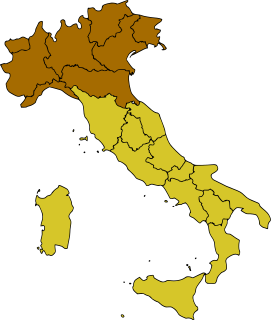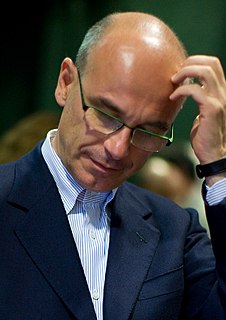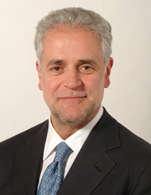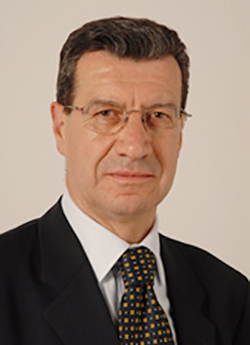Results
Summary of the results of all the lists reaching at least a tenth of the suffrages.
Italian political spectrum, which had been quite blocked since World War II, began to change rapidly. Umberto Bossi's Lega Nord obtained a stunning result in the main election of this round of vote, the choice of the Lombard Regional Council. If the Christian Democracy hugely suffered the League pressure in Northern Italy, it counterbalanced these negative result in Southern Italy. All Italy instead punished the Communists, revolutions in the Eastern Bloc having marked the final decline of the party: Secretary Achille Occhetto understood that an era was finished, and prepared the transition of his group to social-democratic ideas.

World War II, also known as the Second World War, was a global war that lasted from 1939 to 1945. The vast majority of the world's countries—including all the great powers—eventually formed two opposing military alliances: the Allies and the Axis. A state of total war emerged, directly involving more than 100 million people from over 30 countries. The major participants threw their entire economic, industrial, and scientific capabilities behind the war effort, blurring the distinction between civilian and military resources. World War II was the deadliest conflict in human history, marked by 50 to 85 million fatalities, most of whom were civilians in the Soviet Union and China. It included massacres, the genocide of the Holocaust, strategic bombing, premeditated death from starvation and disease, and the only use of nuclear weapons in war.

Umberto Bossi is an Italian politician, former leader of the Northern League, a party seeking autonomy or independence for Northern Italy or Padania. He is married to Manuela Marrone and has four sons.

Lega Nord, whose complete name is Lega Nord per l'Indipendenza della Padania, is a right-wing regionalist political party in Italy. In the run-up of the 2018 general election, the party was rebranded as Lega (League) without changing its official name in the party's statute. The party was nonetheless frequently referred to only as "Lega" even before the rebranding. The LN is also often referred to as Carroccio by the Italian media.
Despite these changes, all fifteen councils confirmed their respective political administrations. However, numbers in Northern Italy were too close to allow stable leaderships, and a period of fragmentation was opened in those regions. When these councils expired in 1995, all Italian politics was completely changed.

Northern Italy is a geographical region in the northern part of Italy. Non-administrative, it consists of eight administrative Regions in northern Italy: Aosta Valley, Piedmont, Liguria, Lombardy, Emilia-Romagna, Veneto, Friuli-Venezia Giulia and Trentino-Alto Adige/Südtirol. As of 2014, its population was 27,801,460. Rhaeto-Romance and Gallo-Italic languages are spoken in the region, as opposed to the Italo-Dalmatian languages spoken in the rest of Italy.
This page is based on this
Wikipedia article Text is available under the
CC BY-SA 4.0 license; additional terms may apply.
Images, videos and audio are available under their respective licenses.

Elections to the European Parliament were held in Italy on 12 and 13 June 2004.

General elections were held in Italy on 5 and 6 April 1992 to select the Eleventh Republican Parliament. They were the first without the traditionally second most important political force in Italian politics, the Italian Communist Party (PCI), which had been disbanded in 1991. It was replaced by a more social-democratic oriented force, the Democratic Party of the Left (PDS), and by a minority entity formed by members who did not want to renounce the communist tradition, the Communist Refoundation Party (PRC). However, put together they gained around 4% less than what the already declining PCI had obtained in the 1987 Italian general election, despite PRC had absorbed the disbanded Proletarian Democracy (DP).

General elections were held in Italy on Sunday, 2 June 1946. They were the first after World War II and elected 556 deputies to the Constituent Assembly. Theoretically, a total of 573 deputies were to be elected, but the election did not take place in the Julian March and in South Tyrol, which were under military occupation by the United Nations.

The first elections for the European Parliament in Italy were held on 10 June 1979.

The second elections for the European Parliament in Italy were held on 17 June 1984.

The third elections for the European Parliament in Italy were held on 18 June 1989.

The European Parliament election of 1999 in Italy was the election of the delegation from Italy to the European Parliament in 1999.

The Sardinian regional election of 2004 took place on 12–13 June 2004.

The Politics of Lombardy, Italy, takes place in a framework of a semi-presidential representative democracy, whereby the President of the Region is the head of government, and of a pluriform multi-party system. Legislative power is vested in the Regional Council of Lombardy, while executive power is exercised by the Regional Government led by the President, who is directly elected by the people. The current Statute, which regulates the functioning of the regional institutions, has been in force since 2008.

The Lombard regional election of 2005 took place on 3–4 April 2005. The 8th term of the Regional Council was chosen. Roberto Formigoni was re-elected for the third time in a row President, defeating Riccardo Sarfatti.

The Lombard regional election of 2000 took place on 16 April 2000. The 7th term of the Regional Council was chosen.

The Lombard regional election of 1995 took place on 23 April 1995. The 6th term of the Regional Council was chosen.

The Tuscan regional election of 1995 took place on 23 April 1995.

The Sardinian regional election of 2009 took place on 15–16 February 2009.

The Lombard regional election of 2010 took place on 28–29 March 2010. The 9th term of the Regional Council was chosen.

The Regional Council of Lombardy is the legislative assembly of Lombardy.

The Italian regional elections of 1970 were held on June 7. Even if the regional system was conceived by the Italian Constitution in 1948, the five autonomous regions were the sole to be immediately established. The fifteen ordinary regions were indeed created in 1970 with the first elections.

The Italian regional elections of 1975 were held on June 15. The fifteen ordinary regions, created in 1970, elected their second assemblies. Following the 1971 census, Piedmont, Veneto and Latium had ten more seats each.

The Italian regional elections of 1980 were held on June 8. The fifteen ordinary regions, created in 1970, elected their third assemblies.

The Italian regional elections of 1985 were held on May 12. The fifteen ordinary regions, created in 1970, elected their fourth assemblies.

























